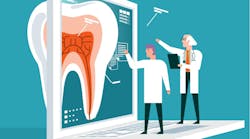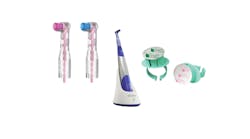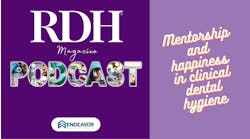Discussions surrounding medications, medical histories, and oral health are recurring and integral facets of our professional practice. From the inception of our dental hygiene education, we have been instilled with the fundamental importance of obtaining comprehensive medical histories, meticulous medication lists, and vital sign assessments for each patient. This procedural diligence is paramount in the delivery of patient-centered care, thus the division that often exists between the realms of medical and dental care can be a source of consternation for many hygienists.
The medical-dental divide
The perplexing nature of this divide becomes evident when one considers the significant overlap in the core functions of the two health-care professions. Both dental and medical practitioners engage ardently in health promotion, prevention of diseases, and provision of routine care and emergency interventions tailored to their respective patient populations. While these shared objectives underscore their parallelism, the divergence in their primary areas of focus is unmistakable. Dental professionals are uniquely centered on oral health, whereas medical practitioners serve as the primary gatekeepers and orchestrators of holistic bodily health.
In cases where appropriate and beneficial to the patient, both dental and medical practitioners may seek insights from one another to inform treatment decisions or facilitate referrals. Regrettably, the chasm between these distinct health-care systems persists due to the absence of well-established infrastructure, technological integration, and streamlined personnel collaboration.1 The burden often falls on patients to navigate the interface between dental and medical care independently and is further compounded by deficiencies in health literacy and the resources required to bridge this gap.
The imperative collaborative efforts between medical and dental professionals cannot be overstated. Such collaboration is indispensable in furnishing comprehensive, patient-centric health care. The well-documented interrelationship between oral and overall health underscores the need for these two disciplines to converge. Through effective collaboration, practitioners can collectively contribute to enhanced patient outcomes, more accurate diagnoses, and development of more efficacious treatment plans. It is incumbent on the health-care community to champion this convergence and ensure that patients receive the integrated care they deserve.
Interprofessional education: The bridge
In any discourse on the imperative synergy between medical and dental domains, we must delve into the critical concept of interprofessional education (IPE). IPE serves as the foundation upon which our health-care landscape can evolve, ultimately facilitating the bridge across the medical-dental chasm.2
Interprofessional education signifies a pedagogical paradigm shift, wherein health-care professionals from diverse disciplines come together in a collaborative educational setting. It encompasses not only medical and dental practitioners but also professionals from nursing, pharmacy, social work, and an array of allied health fields. This multidisciplinary approach fosters a profound appreciation for the complementary nature of the health-care disciplines and engenders a harmonious spirit of teamwork and mutual respect.2
Cornerstone of collaboration
The role of IPE in the context of medical-dental integration cannot be overstated.3 It serves as the crucible in which health-care professionals are tempered and primed to embrace a holistic perspective. By nurturing interdisciplinary understanding, IPE equips these professionals with the capacity to discern the intricate interplay between oral and systemic health. As a result, they emerge as health-care practitioners who are not only proficient within their respective spheres but are also adept at navigating the nexus between oral and general health.
Related reading ... Medical-dental integration: A solution for oral health disparities
This educational foundation ensures that the next generation of providers is well prepared to collaborate seamlessly, communicate effectively, and advocate for patient-centered, comprehensive care. IPE is the cornerstone upon which the future of medical-dental collaboration hinges, heralding a new era of integrated and holistic health-care delivery.
The COVID-19 example
The pandemic emphasized the concept of interprofessional collaboration, particularly in dental hygiene. As numerous dental facilities temporarily closed or reevaluated their operations to navigate the challenges, a unique opportunity emerged for hygienists. They found themselves at a pivotal intersection where their expertise could be used in other sectors of health care.4 In response to the urgent need to mitigate the impact of the pandemic, many hygienists cross-trained to deliver the COVID vaccine.
This shift underscored the adaptability of dental hygienists and showcased the crucial role interprofessional collaboration plays during times of crisis. Hygienists became integral members of interdisciplinary teams, working alongside professionals from other health-care domains to collectively address the pandemic. The collaboration highlighted the integration of hygienists into new roles and leveraged their unique skills to contribute meaningfully to broader public health initiatives.
How IPE can close the divide
The persistent division between medical and dental care poses challenges for professionals and patients alike. The need for collaboration is underscored in the shared objectives of health promotion, disease prevention, and routine care. The absence of streamlined infrastructure places a burden on the public to navigate the interface independently.
IPE is a pivotal paradigm shift that can bridge the medical-dental chasm. It fosters a multidisciplinary approach and promotes teamwork and mutual respect among health-care providers. The need for a transformative shift toward patient-centered, integrated health care makes IPE crucial in shaping the future of medical-dental collaboration.
Editor's note: This article appeared in the March 2024 print edition of RDH magazine. Dental hygienists in North America are eligible for a complimentary subscription. Sign up here.
References
- Atchison KA, Weintraub JA, Rozier RG. Bridging the dental-medical divide: case studies integrating oral health care and primary health care. J Amer Dent Assoc. 2018;149(10):850-858. doi:10.1016/j.adaj.2018.05.030
- Coleman AJ, Finn GM, Nattress BR. Interprofessional education in dentistry. Br Dent J. 2018;225(3):257-262. doi:10.1038/sj.bdj.2018.547
- Tolle SL, Vernon MM, McCombs G, De Leo G. Interprofessional education in dental hygiene: attitudes, barriers and practices of program faculty. J Dent Hyg. 2019;93(2):13-22.
- Sacoor S, Chana S, Fortune F. The dental team as part of the medical workforce during national and global crises. Br Dent J. 2020;229(2):89-92. doi:10.1038/s41415-020-1854-6
Samantha Farrar, DHSc, MPH, BSDH, RDH, is a distinguished hygienist holding a doctoral degree and also boasts a stellar career as a clinician, educator, and board examiner. Over 18 years, her expertise has flourished, emphasizing a focus on pediatric dentistry and research. Currently an adjunct faculty member at an esteemed institution, she imparts knowledge in research and clinical dental hygiene, contributing to the development of future dental professionals.






